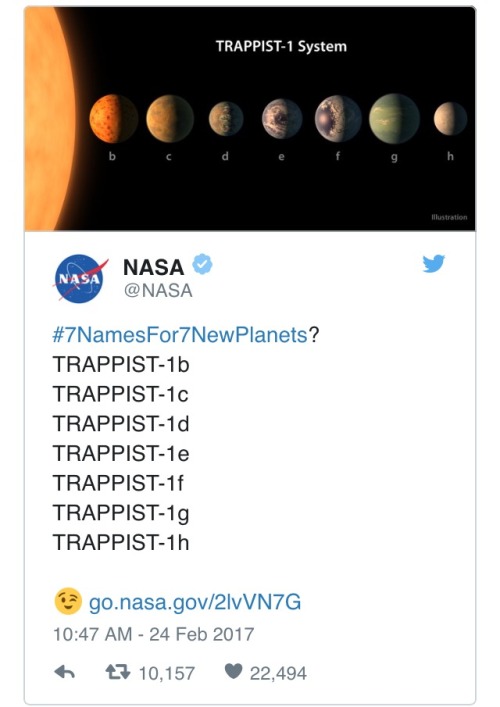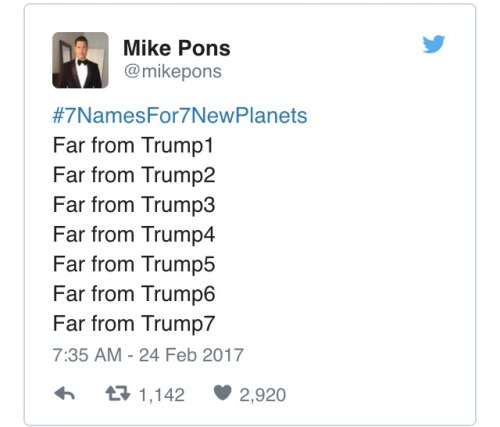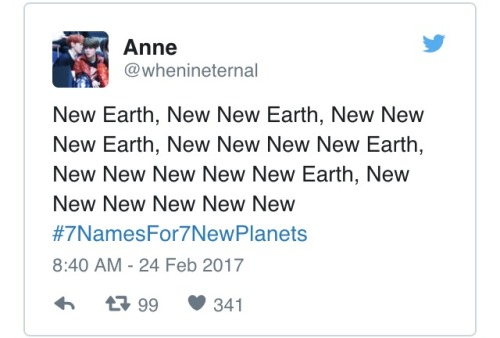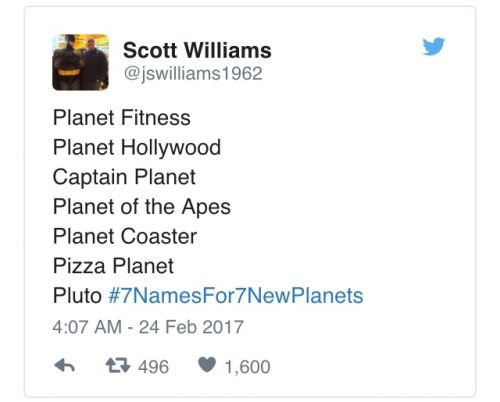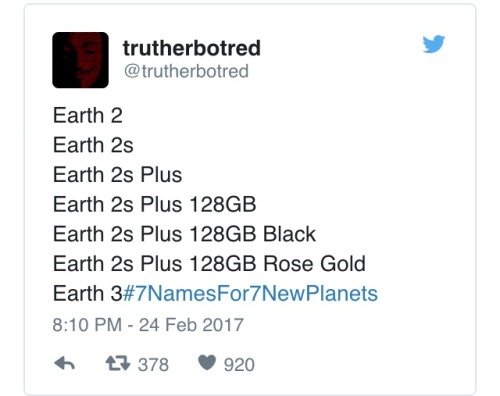Glossary

An episode late is better than none at all! Hear about satellites, space probes, orbiters, and landers through history.
Below the cut are sources, music credits, an awesome infographic showing all the satellites currently in orbit around Earth, a vocab list, and the transcript of this episode. Let me know what you think I should research next by messaging me here, tweeting at me at @HDandtheVoid, or asking me to my face if you know me in real life. And please check out the podcast on iTunes, rate it or review it if you’d like, subscribe, and maybe tell your friends about it if you think they’d like to listen!
(My thoughts on the next episode were space race history, the transit of Venus, or maybe something about the Moon landing. I’m prepping to interview a friend about her graduate-level research into the history of the universe and possibly dark matter, too. Let me know by the 8th and I’ll hopefully have the next podcast up on September 18th!)
Glossary
Clarke Belt - an area of geostationary orbit in Earth’s atmosphere, 35,786 km directly above the equator, where a satellite orbits the Earth at the same speed the Earth is rotating.
geostationary orbit - when an object orbits directly above the equator and appears stationary to observers on Earth’s surface.
geosynchronous orbit - when an object orbits Earth at an orbital period that matches Earth's rotation on its axis. From the perspective of an observer on Earth's surface, the object would return to the exact same position in the sky after a period of one day.
gyroscopes - a device consisting of several rings that spin freely around different axes. The rapidly rotating wheel has a large moment of inertia and therefore resists change from the plane in which it is rotated. Large gyroscopes allow for steady navigation of ships, submarines, and space ships. See examples in the link.
heliosheath - the outer region of the heliosphere. It is just beyond termination shock, the point where solar wind abruptly slows down and becomes denser and hotter as it presses outward against the approaching wind in interstellar space.
heliosphere - a huge wind sock-shaped bubble that extends beyond Pluto’s orbit and contains our solar system, solar wind, and the entire solar magnetic field.
lander - a spacecraft launched with the intent to land it, unharmed and fully functioning, on the surface of an object that is astronomical in nature. It is aimed at a specific target that astronomers want to learn more about and investigates the object at the surface level. It can be manned or unmanned.
orbiter - an unmanned spacecraft launched with the intent to bring it into orbit around a larger body in order to study that body. It is similar to a satellite but does not orbit Earth.
probe - an unmanned machine sent into space to collect data. It is aimed at a specific target that astronomers want to learn more about.
spacecraft - a pilot-able vehicle used for traveling in space. It can be manned or unmanned.
Van Allen Belts - belts of radiation in Earth’s atmosphere.
Transcript
Sources
Timeline of space exploration to 2013 via the National Archives
Timeline of NASA, the space shuttle, and near-Earth space flights
Space exploration timeline via Sea and Sky
Gyroscope definition via USC
Infographic on satellites launched 1950-1978 via the CalTech Jet Propulsion Lab
List of satellites via Wikipedia
A history of Sputnik via an excerpt from Paul Dickson’s book Sputnik: The Shock of the Century on PBS
“Instead of being concerned with winning the first round of the space race, Eisenhower and his National Security Council were much more interested in launching surveillance satellites that could tell American intelligence where every Soviet missile was located.”
Explorer 1 overview via NASA
Vanguard 1 overview via NASA
SCORE overview via the Smithsonian National Air and Space Museum
Pioneer lunar mission overview via the CalTech Jet Propulsion Lab
Various probe/satellite mission overviews via NASA
Australian WRESAT mission via Australia’s Department of Defence
Pioneer expeditions via NASA
Mariner 10 mission overview via NASA
Magellan mission overview via NASA
Synthetic aperture radar overview via radartutorial.edu
MESSENGER mission overview via JHU Applied Physics Lab
Mariner missions to Venus overview via the CalTech Jet Propulsion Lab
Mariner missions to Mars overview via the CalTech Jet Propulsion Lab
“The final Mariner to Mars, however, was the lab’s greatest planetary success to date.”
Mariner 9 via the CalTech Jet Propulsion Lab
Viking mission overview via NASA
Pathfinder/Sojourner mission overview via NASA
Opportunity mission overview via the CalTech Jet Propulsion Lab
Spirit mission overview via the CalTech Jet Propulsion Lab
Curiosity rover via NASA
Pioneer 10 mission overview via NASA
Pioneer 11 mission overview via NASA
Juno mission overview via the CalTech Jet Propulsion Lab
Cassini-Huygens mission overview via the CalTech Jet Propulsion Lab
Voyager mission overview via the CalTech Jet Propulsion Lab
“The Voyager message is carried by a phonograph record, a 12-inch gold-plated copper disk containing sounds and images selected to portray the diversity of life and culture on Earth.”
Voyager mission trackers via the CalTech Jet Propulsion Lab
Heliosphere definition via NASA
Heliosheath definition via NASA
New Horizons mission overview via NASA
Compton Gamma-Ray Observatory via NASA
Chandra X-Ray Observatory via NASA
Spitzer Space Telescope via CalTech
Einstein Observatory (HEAO-2) via NASA
International Ultraviolet Explorer (IUE) via NASA
International Ultraviolet Explorer (IUE) via ESA
Extreme Ultraviolet Explorer (EUVE) via NASA
Advanced Satellite for Cosmology and Astrophysics (ASCA, formerly ASTRO-D) via NASA archives
Far Ultraviolet Spectroscopic Explorer (FUSE) via JHU
Active space probe/observatory missions via NASA
Chandrayaan-1 via the CalTech Jet Propulsion Lab
Hayabusa 2 mission overview via NASA
Hayabusa-2’s twitter account
A map of every active satellite orbiting Earth via Quartz
Union of Concerned Scientists Satellite Database
Cul-de-Sac comic by Richard Thompson
“Well, there’s dust everywhere, and there’s all kinds of trash—food wrappers and broken parts of things and gloves and shoes. And gas giants and black holes and rocks and dirt. And there’s old TV shows and strange creatures and there’s unidentifiable stuff that no one can explain. And it’s expanding all the time. Toss in a few trillion stuffed toys and it’d be just like your room.”
Intro Music: ‘Better Times Will Come’ by No Luck Club off their album Prosperity
Filler Music: ‘Satellite’ by Guster off their album Ganging Up On The Sun
Filler Music: ‘Sunn’ by Radical Face off his album Sunn Moonn Eclippse. Check out the video in the album link, it’s amazing.
Outro Music: ‘Fields of Russia’ by Mutefish off their album On Draught.
More Posts from Fillthevoid-with-space and Others






The Meaning of Color in Hubble Images: An interactive slideshow that illustrates how the Hubble Space Telescope incorporates light in multiple wavelengths to produce it’s stunning imagery.
why is there star
gas cloud get squished (gravitational collapse) then sometimes smaller elements can squish together to make bigger elements (nuclear fusion) and this continues as long as the smolest elements (hydrogen and helium) are in the core
Here’s the nose scratching sponge I talked about in Episode 19!

This is how astronauts clear our ears (and scratch our noses!) during a spacewalk.

I’m back with the last episode of 2018! A conversation with a friend sparked this idea and I just ran with it while I had the inspiration, so please enjoy an episode on the strange and wonderful scales that astronomers have created to quantify data that is very unusual.
Below the cut are the glossary, transcript, sources, and music credits. Send me any topic suggestions via Tumblr message (you don’t need an account for it!). You can also tweet at me on Twitter at @HDandtheVoid, or you can ask me to my face if you know me. Subscribe on iTunes to get the new episodes of my ideally-monthly-updated podcast (I hope I have more inspiration/time in 2019), and please please please rate and review it. Go ahead and tell friends if you think they’d like to hear it, too!
(My thoughts on the next episode are the Coriolus Force, Stephen Hawking, or famous comets. The next episode will go up in 2019, hopefully in early January!)
Glossary
background risk - the average risk from random impacts of space objects with Earth.
Bortle Scale - an objective scale to measure the clarity and effect of light pollution on a night’s stargazing.
Drake Equation - a way to estimate the number of potential active, communicative civilizations in the Milky Way galaxy based on 1) the average rate of star formation in our galaxy 2) the fraction of those stars that have planets 3) the average number of planets that can potentially support life per star with its own orbiting planets 4) the fraction of planets that could support life which actually develop life at some point 5) the fraction of planets with life that actually go on to develop intelligent life and civilizations 6) the fraction of civilizations that develop a technology that releases detectable signs of their existence into space 7) the length of time it would take those civilizations release detectable signals into space.
Hynek Scale - quantifies encounters with UFOs and aliens.
Kardashev Scale - measures how advanced a civilization’s technology is based on their mastery of resources and exploration into space.
METI - Messaging to ExtraTerrestrial Intelligence
Palermo Technical Impact Hazard Scale - categorizes and prioritizes the potential impact risks of objects in space, such as asteroids.
Rio Scale - quantifies the impact of any public announcement regarding evidence of extraterrestrial intelligence.
San Marino Scale - quantifies the impact of sending transmissions from Earth to extraterrestrial intelligence.
SETI - the Search for ExtraTerrestrial Intelligence.
Torino Scale - communicates the risk associated with a particular asteroid or comet’s potential to impact with Earth to the public.
Script/Transcript
Sources
10 Unusual Scientific Scales via Listverse (Sep 2010)
John Bortle’s article on his magnitude scale via Sky and Telescope, July 2006
“I have created a nine-level scale. It is based on nearly 50 years of observing experience. I hope it will prove both enlightening and useful to observers — though it may stun or even horrify some! Should it come into wide use, it would provide a consistent standard for comparing observations with light pollution.”
Bortle dark sky scale via Big Sky Astronomy Club
Bortle dark sky scale via LSU
Palermo Technical Impact Hazard Scale via NASA
The Palermo Scale is the base-10 logarithm of the relative risk.
PS = log10 R.
The relative risk R is given by R = PI / (fB × DT), where PI is the impact probability of the event in question and DT is the time until the potential event, measured in years.
The annual background impact frequency, fB = 0.03 × E-4/5, is the annual probability of an impact event with energy (E, in megatons of TNT) at least as large as the event in question.
Torino Impact Hazard Scale via NASA
Rio Scale via SETI League
San Marino Scale via SETI League
Rio and San Marino Scale history via Wikipedia
Drake Equation via Wikipedia
Nikolai Kardashev via Wikipedia
"energy consumption at ≈4×1019 erg/sec (4 × 1012 watts)."
New Variation of Kardashev Scale Developed via Edgy Labs (June 2018)
J. Allen Hynek's Scale Of UFO Classification via The Night Sky
Hynek's UFO Classification System via The Center for UFO Studies
Intro Music: ‘Better Times Will Come’ by No Luck Club off their album Prosperity
Outro Music: ‘Fields of Russia’ by Mutefish off their album On Draught
I found a bizarre open-access, peer-review journal of STEM research. It was hard for me to find anything that pertained to astronomy or any of the stellar studies, but I did find a couple categories I could investigate:
Astrobiology
Astronomical Sciences
Spectroscopy (I didn’t see any astronomical spectroscopy stuff but who knows)
Just looking at the articles popping up suggests that it would take some serious digging to find anything (and I would certainly have to work on my keyword optimization techniques because typing ‘space’ into the search bar got me nothing relevant to my interests), but it’s a new potential resource! And for anyone who wants to find a way to publish in STEM fields, maybe it’s something worth checking out?
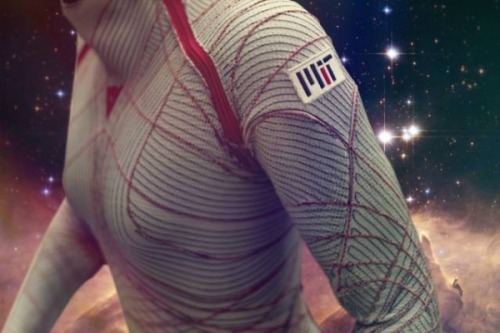
Next Generation Spacesuit like Second Skin
Scientists from MIT have designed a next-generation spacesuit that acts practically as a second skin, and could revolutionize the way future astronauts travel into space. (Photo : Jose-Luis Olivares/MIT)
Astronauts are used to climbing into conventional bulky, gas-pressurized spacesuits, but this new design could allow them to travel in style. Soon they may don a lightweight, skintight and stretchy garment lined with tiny, muscle-like coils. Essentially the new suit acts like a giant piece of shrink-wrap, in which the coils contract and tighten when plugged into a power supply, thereby creating a “second skin.”
“With conventional spacesuits, you’re essentially in a balloon of gas that’s providing you with the necessary one-third of an atmosphere [of pressure,] to keep you alive in the vacuum of space,” lead researcher Dava Newman, a professor of aeronautics and astronautics and engineering systems at MIT, said in astatement.
“We want to achieve that same pressurization, but through mechanical counterpressure - applying the pressure directly to the skin, thus avoiding the gas pressure altogether. We combine passive elastics with active materials. … Ultimately, the big advantage is mobility, and a very lightweight suit for planetary exploration.”
Newman, who has worked for the past decade on a design for the next-generation spacesuit, describes the new garment in detail in the journal IEEE/ASME: Transactions on Mechatronics.
The MIT BioSuit’s coils, which are a main feature of the outfit, are made from a shape-memory alloy (SMA). At a certain temperature, the material can “remember” and spring back to its engineered shape after being bent or misshapen.
Skintight suits are not a novel idea, but in the past scientists have always struggled with the question: how do you get in and out of a suit that is so tight? That’s where the SMAs come in, allowing the suit to contract only when heated, and subsequently stretched back to a looser shape when cooled.
Though the lightweight suit may not seem at first like it can withstand the harsh environment that is outer space, Newman and his colleagues are sure that the BioSuit would not only give astronauts much more freedom during planetary exploration, but it would also fully support these space explorers.
Newman and his team are not only working on how to keep the suit tight for long periods of time, but also believe their design could be applied to other attires, such as athletic wear or military uniforms.
“An integrated suit is exciting to think about to enhance human performance,” Newman added. “We’re trying to keep our astronauts alive, safe, and mobile, but these designs are not just for use in space.”
Comet That Took a Century to Confirm Passes by Earth
NASA Goddard Space Flight Center logo. March 31, 2017 On April 1, 2017, comet 41P will pass closer than it normally does to Earth, giving observers with binoculars or a telescope a special viewing opportunity. Comet hunters in the Northern Hemisphere should look for it near the constellations Draco and Ursa Major, which the Big Dipper is part of. Whether a comet will put on a good show for observers is notoriously difficult to predict, but 41P has a history of outbursts, and put on quite a display in 1973. If the comet experiences similar outbursts this time, there’s a chance it could become bright enough to see with the naked eye. The comet is expected to reach perihelion, or its closest approach to the sun, on April 12.
Image above: In this image taken March 24, 2017, comet 41P/Tuttle-Giacobini-Kresák is shown moving through a field of faint galaxies in the bowl of the Big Dipper. On April 1, the comet will pass by Earth at a distance of about 13 million miles (0.14 astronomical units), or 55 times the distance from Earth to the moon; that is a much closer approach than usual for this Jupiter-family comet. Image Credits: image copyright Chris Schur, used with permission. Officially named 41P/Tuttle-Giacobini-Kresák to honor its three discoverers, the comet is being playfully called the April Fool’s Day comet on this pass. Discovery credit goes first to Horace Tuttle, who spotted the comet in 1858. According to the Cometography website, 41P was recognized at the time as a periodic comet — one that orbits the sun — but astronomers initially were uncertain how long the comet needed to make the trip. The comet was rediscovered in 1907 by Michael Giacobini but not immediately linked to the object seen in 1858. Later, the astronomer Andrew Crommelin determined that the two observations had been of the same object and predicted that the comet would return in 1928 and 1934, according to the Cometography entry for the comet. However, the object was not seen then and was considered lost. In 1951, L’ubor Kresák discovered it again and tied it to the earlier observations. A member of the Jupiter family of comets, 41P makes a trip around the sun every 5.4 years, coming relatively close to Earth on some of those trips. On this approach, the comet will pass our planet at a distance of about 13 million miles (0.14 astronomical units), or about 55 times the distance from Earth to the moon. This is the comet’s closest approach to Earth in more than 50 years and perhaps more than a century. For scientists, 41P’s visit is an opportunity to fill in details about the comet’s composition, coma and nucleus.
Image above: An artist’s illustration of a group of comet enthusiasts. Image Credits: NASA’s Goddard Space Flight Center. “An important aspect of Jupiter-family comets is that fewer of them have been studied, especially in terms of the composition of ices in their nuclei, compared with comets from the Oort cloud,” said Michael DiSanti of NASA’s Goddard Space Flight Center in Greenbelt, Maryland. He and his team will be observing 41P on April 1 using NASA’s Infrared Telescope Facility in Hawaii. Astronomers will try to determine characteristics such as how quickly 41P’s nucleus rotates, which provides clues about how structurally sound the nucleus is, and whether any changes can be documented in the coma and tail. Observers also will look for outbursts, which are an indication of how active a comet is. By cataloging the subtle, and sometimes not-so-subtle, differences among comets, researchers can construct a family tree and trace the history of how and where these objects formed as the solar system was taking shape. “Comets are remnants from the early solar system,” said DiSanti. “Each comet that comes into the neighborhood of Earth gives us a chance to add to our understanding of the events that led to the formation of our own planet.” Related links: Comets: http://www.nasa.gov/comets Goddard Space Flight Center: https://www.nasa.gov/centers/goddard/home/index.html Images (mentioned), Text, Credits: NASA’s Goddard Space Flight Center, by Elizabeth Zubritsky/Rob Garner. Greetings, Orbiter.ch Full article
SpaceX SES-10 Mission successfully Launch
SpaceX - Falcon 9 / SES-10 Mission patch. March 31, 2017
Falcon 9 carrying SES-10 satellite launch
SpaceX took a step into the future Thursday as it reused – for the first time – a recovered first stage of a previously-flown Falcon 9 rocket. Thursday’s mission, carrying the SES-10 communications satellite, lifted off from Pad 39A at Florida’s Kennedy Space Center Thursday 30 March at 18:27 local time (22:27 UTC) and once again landed the booster.
Falcon 9 launch of SES-10
Thursday’s mission made use Falcon 9 the second orbit-capable rocket – after the Space Shuttle – to achieve partial reusability. The Falcon 9 flew from Launch Complex 39A at the Kennedy Space Center, the same pad from which the Shuttle began eighty-two of its missions, including its first and final flights. Reusability has long been a key objective for SpaceX. Making the company’s first launch in March 2006, the small Falcon 1 vehicle carried a parachute system intended to bring its spent first stage back to Earth.
Falcon 9 first stage landed on drone barge
SpaceX’s Falcon 9 rocket deliver SES-10, a commercial communications satellite for SES, to a Geostationary Transfer Orbit (GTO). SES is a world-leading satellite operator, providing reliable and secure satellite communications solutions across the globe.
SES-10 satellite
The SES-10 mission mark a historic milestone on the road to full and rapid reusability as the world’s first reflight of an orbital class rocket. Falcon 9’s first stage for the SES-10 mission previously supported the successful CRS-8 mission in April 2016. For more information about SpaceX, visit: http://www.spacex.com/ Images, Video, Text, Credits: SpaceX/SES. Greetings, Orbiter.ch Full article
NASA Parachute Device Could Return Small Spacecraft from Deep Space Missions
ISS - International Space Station patch. March 7, 2017
After a two-month stay aboard the International Space Station, NASA’s Technology Educational Satellite (TechEdSat-5) that launched Dec. 9, 2016, was deployed on March 6, 2017 from the NanoRacks platform and into low-Earth orbit to demonstrate a critical technology that may allow safe return of science payloads to Earth from space. Orbiting about 250 miles above Earth, the Exo-Brake, a tension-based, flexible braking device resembling a cross-shaped parachute, opens from the rear of the small satellite to increase the drag. This de-orbit device tests a hybrid system of mechanical struts and flexible cord with a control system that warps the Exo-Brake. This allows engineers to guide the spacecraft to a desired entry point without the use of fuel, enabling accurate landing for future payload return missions.
Small Satellite With Exo-Brake Technology Launches From International Space Station
Two additional technologies will be demonstrated on TechEdSat-5. These include the ‘Cricket’ Wireless Sensor Module, which provides a unique wireless network for multiple wireless sensors, providing real time data for TechEdSat-5. The project team seeks to develop building blocks for larger scale systems that might enable future small or nanosatellite missions to reach the surface of Mars and other planetary bodies in the solar system. For more information on NASA’s small spacecraft technology missions, visit: http://www.nasa.gov/cubesats Image, Video, Text, Credits: NASA/Ames Research Center/Kimberly Williams. Greetings, Orbiter.ch Full article
A podcast project to fill the space in my heart and my time that used to be filled with academic research. In 2018, that space gets filled with... MORE SPACE! Cheerfully researched, painstakingly edited, informal as hell, definitely worth everyone's time.
243 posts
